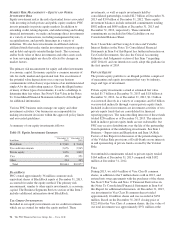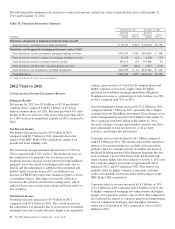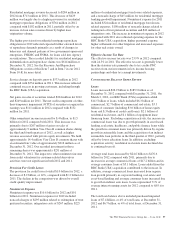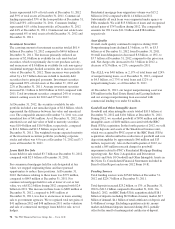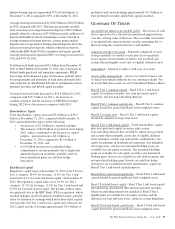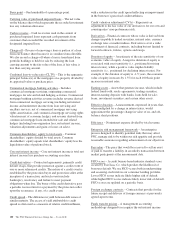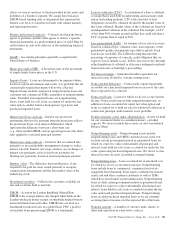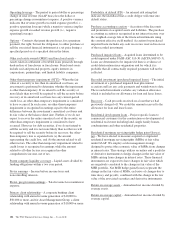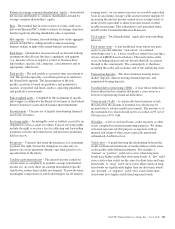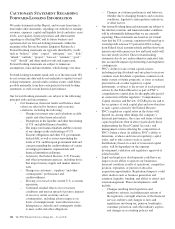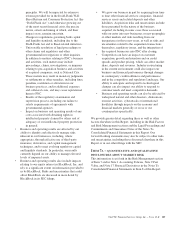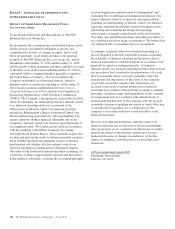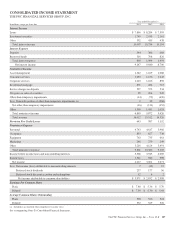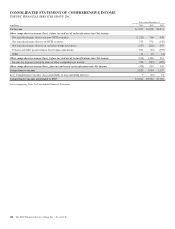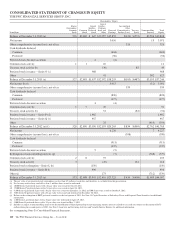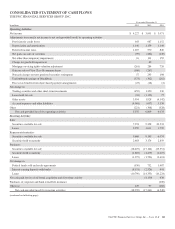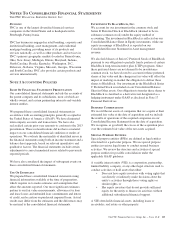PNC Bank 2013 Annual Report Download - page 121
Download and view the complete annual report
Please find page 121 of the 2013 PNC Bank annual report below. You can navigate through the pages in the report by either clicking on the pages listed below, or by using the keyword search tool below to find specific information within the annual report.
Return on average common shareholders’ equity – Annualized
net income attributable to common shareholders divided by
average common shareholders’ equity.
Risk – The potential that an event or series of events could occur
that would threaten PNC’s ability to achieve its strategic objectives,
thereby negatively affecting shareholder value or reputation.
Risk appetite – A dynamic, forward-looking view on the aggregate
amount of risk PNC is willing and able to take in executing
business strategy in light of the current business environment.
Risk limits – Quantitative measures based on forward looking
assumptions that allocate the firm’s aggregate risk appetite
(e.g. measure of loss or negative events) to business lines,
legal entities, specific risk categories, concentrations and as
appropriate, other levels.
Risk profile – The risk profile is a point-in-time assessment of
risk. The profile represents overall risk position in relation to
the desired risk appetite. The determination of the risk
profile’s position is based on qualitative and quantitative
analysis of reported risk limits, metrics, operating guidelines
and qualitative assessments.
Risk-weighted assets – Computed by the assignment of specific
risk-weights (as defined by the Board of Governors of the Federal
Reserve System) to assets and off-balance sheet instruments.
Securitization – The process of legally transforming financial
assets into securities.
Servicing rights – An intangible asset or liability created by an
obligation to service assets for others. Typical servicing rights
include the right to receive a fee for collecting and forwarding
payments on loans and related taxes and insurance premiums
held in escrow.
Swaptions – Contracts that grant the purchaser, for a premium
payment, the right, but not the obligation, to enter into an
interest rate swap agreement during a specified period or at a
specified date in the future.
Taxable-equivalent interest – The interest income earned on
certain assets is completely or partially exempt from Federal
income tax. As such, these tax-exempt instruments typically
yield lower returns than taxable investments. To provide more
meaningful comparisons of yields and margins for all interest-
earning assets, we use interest income on a taxable-equivalent
basis in calculating average yields and net interest margins by
increasing the interest income earned on tax-exempt assets to
make it fully equivalent to interest income earned on other
taxable investments. This adjustment is not permitted under
GAAP on the Consolidated Income Statement.
Total equity – Total shareholders’ equity plus noncontrolling
interests.
Total return swap – A non-traditional swap where one party
agrees to pay the other the “total return” of a defined
underlying asset (e.g., a loan), usually in return for receiving a
stream of LIBOR-based cash flows. The total returns of the
asset, including interest and any default shortfall, are passed
through to the counterparty. The counterparty is, therefore,
assuming the credit and economic risk of the underlying asset.
Transaction deposits – The sum of interest-bearing money
market deposits, interest-bearing demand deposits, and
noninterest-bearing deposits.
Troubled debt restructuring (TDR) – A loan whose terms have
been restructured in a manner that grants a concession to a
borrower experiencing financial difficulties.
Value-at-risk (VaR) – A statistically-based measure of risk
that describes the amount of potential loss which may be
incurred due to adverse market movements. The measure is of
the maximum loss which should not be exceeded on 95 out of
100 days for a 95% VaR.
Watchlist – A list of criticized loans, credit exposure or other
assets compiled for internal monitoring purposes. We define
criticized exposure for this purpose as exposure with an
internal risk rating of other assets especially mentioned,
substandard, doubtful or loss.
Yield curve – A graph showing the relationship between the
yields on financial instruments or market indices of the same
credit quality with different maturities. For example, a
“normal” or “positive” yield curve exists when long-term
bonds have higher yields than short-term bonds. A “flat” yield
curve exists when yields are the same for short-term and long-
term bonds. A “steep” yield curve exists when yields on long-
term bonds are significantly higher than on short-term bonds.
An “inverted” or “negative” yield curve exists when short-
term bonds have higher yields than long-term bonds.
The PNC Financial Services Group, Inc. – Form 10-K 103



